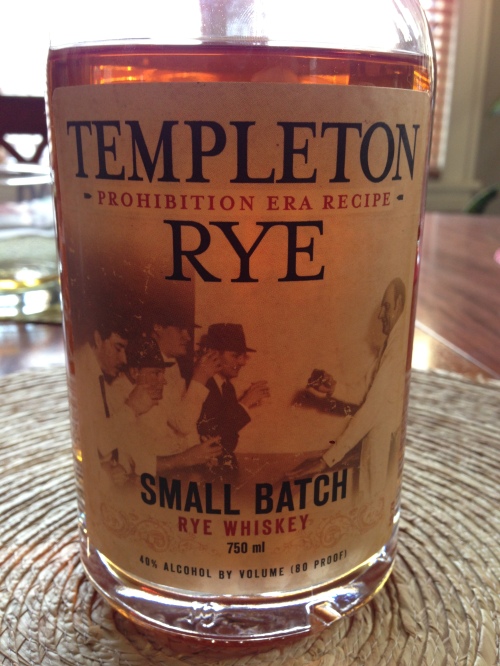 There was a time, not too long ago that I drank whiskey neat because I was a man or something. OK, there were actually some good reasons for this:
There was a time, not too long ago that I drank whiskey neat because I was a man or something. OK, there were actually some good reasons for this:
- If you order whiskey neat in a bar, there is a low risk of them screwing up the drink. Plus, you know exactly how much alcohol you are getting compared to everything else that might potentially go in the glass.
- If I’m having a good tasting whiskey, I just want to taste the whiskey. No accompaniment needed.
- I have a beard sometimes and therefore it’s required of me by society to drink whiskey neat.
- Everyone I’ve talked to generally agrees that I look BA drinking whiskey neat. Some have even gone as far as saying I look like a BAMF, but they may be over-exuberant.
Over this past winter however, I did a little dabbling in the H20 realm, and now I’ve been adding a few drops into some whiskeys depending on my mood. As a frequenter of high class bars all around the world, as I know you are, you may have picked up on this little technique and even perhaps noted that certain high class bars will serve a small dram of water alongside the whiskey. This is not a suggestion that the bartender thinks you may be alcoholic or can’t handle your liquor as I once thought in my early twenties when asked if I wanted a glass of water alongside my whiskey. The presentation of water alongside whiskey is more of a, “If you desire it…” offering.
A whiskey enthusiast might state that adding a few drops of water to the glass will “activate” the aroma compounds in the whiskey. A logical and cynical mind might respond: “What the hell does that mean?” Usually, the whiskey enthusiast really has no idea, but hopefully is at least speaking from the experience they have had where they prefer the whiskey with a few drops of water opposed to the whiskey sans agua. So what’s really going on?
In the simplest sense, the addition of a bit of water is masking certain aromas and enhancing others. That fact is really the actionable part of any research that’s been done so far on the subject. If you want to get really sciencey, (Which OMG, yes, do I) then you can read a nice little paper on it here. If you want an educated professional’s nicer description, you can read it here.
Therefore, if you want to have a go at this little bit of scientific manipulation here’s what you do:
- Grab two glasses
- Pour an equal amount of whiskey into both
- Smell and taste both, perhaps with some water in between
- Drop, let’s say, 5-10 drops of water into one of the glasses
- Smell and taste both again. Do they smell or taste slightly different?
- Proceed to drink both glasses of whiskey. Don’t act like you weren’t going to.
If you truly want to be scientific about it, I would get someone else to apply the water for you, but you’re probably drinking alone again so don’t worry to much about it. The key word in step #5 is “Different”. Notice I didn’t say “Better” or “Worse”. Just different. Different strokes for different folks.
In applying this new found knowledge, whenever you come across a whiskey that you like, but it’s perhaps not “Popping” for you; give it a few drops of water. You can really keep adding drops of water until the point where you start telling yourself that “This tastes like watered-down whiskey.” If you come across a whiskey you don’t like, you are free to use it for fire-based parlor tricks, a fuel source, or a disinfectant in the event of a bar fight. Water dilution will never help a bad whiskey unless it’s diluted to the point it can no longer be tasted.
Additionally, that scientific research article mentioned above which you didn’t read also concludes that cooling down the whiskey (AKA: adding ice) may have a similar, albeit through a different mechanism, effect. Personally, I haven’t found a whiskey I prefer at “Ice temperature” opposed to room temperature or slightly below room temperature, but I will leave that to personal preference.
For those that really want to be an annoying snob to their friends, I would recommend only utilizing water sourced from a location near the distillery of the whiskey you are drinking. While there is certainly no proof behind it, some people do claim that utilizing the whiskey’s local water is truly the ultimate experience. I think something could be said for not using overly hard or overly soft tap water, or perhaps even the ice that has been sitting in your freezer for the past month, but here in Minneapolis, the tap water is just fine.
Think of this as an extra tool in your drinking tool belt and not something that should be done every time. “Whiskey need a little sprucing? *Sprinkle in some magic water!” And remember, if you hide the water, people will think you’re drinking it neat anyway.
*Extra points for creative sprinkling technique.


